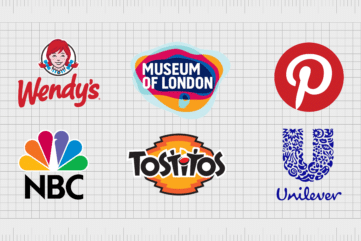Sticking with you: Captivating audiences with sticky content marketing

Think about it – what are the chances that you’ll remember every piece of content you read today?
The answer is probably: “pretty slim”.
After all, in 1984, customers saw an average of around 2,000 marketing messages a day. By 2014, that number had risen to around 5,000. As we head into the future, the number of advertising announcements that appear both online, and offline, are likely to continue growing. It’s no wonder that more than 615 million devices now have ad-blocking software installed.
As customers grow tired of obvious selling tactics, companies have begun to turn to content marketing as a way of showcasing value and highlighting their brand’s unique personality. However, it takes more than just any old writing to engage and excite your existing and potential customers.
If you want to build brand affinity and keep your most valuable clients coming back for more, then you’re going to need to create “sticky” content. In other words, you’ll need website copywriting and online information that inspires, and motivates your audience, while making your business as memorable as possible.
While sticky toffee pudding is likely to grow your waistline, sticky content works by growing your bottom line – gluing the eyes of your valuable followers to everything from your email updates, to your social media campaigns.
So, how do you make your advertising more adhesive?

Marketing messages that stick: What is sticky content?
Today, every content marketing agency or website copywriting agency knows that if they want to access a larger client base for their customers, they need to look at the possibilities of content marketing.
Far more than just a business blog or article posting schedule, a content marketing strategy can be the ultimate way to convey your value to your target customer and enhance your chance of selling online. In fact, content marketing can also be incredibly cost-effective too, as it’s anywhere up to 62% less expensive than a standard outbound campaign.
“Sticky content” in the world of website copywriting, is a term that refers to the content that your customers spend the most time-consuming. You might have certain blog posts that your clients keep coming back to time and time again, or your video content marketing strategy might be working particularly well to keep your customers engaged.
Whatever your aims or plans might be for content marketing, it’s important to know the elements that make up “sticky content” if you want to set yourself up for success. Two experts named Chip, and Dan Heath, created a blueprint for sticky content, around an-easy-to-remember mnemonic: “SUCCES”.

Sticky content: S is for Simple
If you want your content marketing efforts, or your website copywriting to be “sticky”, then you need to keep it short, simple, and easy to read. It’s far easier to remember something that resonates with you on a basic level. Your aim with sticky content should be to get your point across with as much clarity as possible.
Sticky content: U is for Unexpected
What are you more likely to remember: a brand vlog that shares the same ideas you’ve heard about a topic countless times, or a video that blows you away, questions your thoughts, and teases your mind? Sticky content grabs attention by defying expectations and keeping customers curious.
Sticky content: C is for Concrete
It’s not enough to simply create exciting content for your customers. While your sticky content should show off your unique tone of voice, it should also give weight to your industry authority and show how much you know about your business. While statistics can be helpful, examples and stories can help to make your content more “concrete” by painting a picture for your audience.
Sticky content: C is also for Credible
As mentioned above, the best content marketing and website copywriting strategies are built around copy that’s not only engaging but believable too. The pieces you write, produce, or share on social media need to make sense and offer proof too. For instance, if you claim that smoking is bad for your customer’s health, then you could use statistics and imagery to prove that point. This can prompt customers to recognise the value of the content you’re producing.
Sticky content: E is for Emotional
Perhaps one of the most important elements of “sticky content” is that it connects with customers on an emotional level. There’s a lot more to marketing today than simply showing off a good USP. Customers want to feel a connection with their brands, so if you want to make your website copywriting stickier, then you need to focus on what your customers really care about. Consider their pain points, their aspirations, and how your product or service can make their lives better.
Sticky content: S is for Story
Finally, “sticky” content marketing often comes in story format because it’s easier for us, as human beings, to connect with relatable plots and ideas. The use of storytelling allows you to not only tell your audience something but paint a vivid picture for them too. Stories are perfect for sticky content because they move, inspire, and motivate us.
Now that you know the ingredients of super sticky content it’s time to think about how you can infuse it into your content marketing strategy.

Killer content marketing: How to use sticky features on your website
In the world of the website copywriting or content marketing agency, the term “sticky” is a crucial differentiator describing content with the power to captivate any given audience. This distinguishes sticky content from the everyday blog posts and articles written for the express purpose of filling up space on a website or making the most of SEO.
With so much marketing material in the world today, and some incredibly low attention spans to work with, today’s audience needs a lot of sticky content if you want to keep their attention, or convince them to re-visit your website.
Of course, sticky content is about more than just writing the perfect blog post, or publishing the right video. It’s also about making sure that you have the right features on your website to attract traffic and convert leads into conversions.
Here are just some of the things you’ll need to produce sticky content:
1. A consistent brand presence
Your brand needs an identity if you want it to be powerful. For instance, your brand might be focused on creating the best technology for manufacturers in the world, while keeping your processes environmentally-friendly too. On the other hand, your efforts might be focused on a powerful social profile and a strong customer experience. Whatever your identity is, it’s important to keep it consistent so your audience can stick to a “recognisable” voice.
2. A well-designed blog
Although there are plenty of forms that sticky content can take, from a content marketing podcast to a video strategy, it’s hard to generate a loyal following without a blog. Your blog should be packed full of useful information, as well as keywords that help the search engines to understand the context of your brand. Avoid cluttering your blog with any advertisements, or information that might not be relevant to your followers.
3. Social media integration
Social media can help to make your brand more credible, which also makes your content stickier too! When you have a social media presence, you can connect your blogs to other online platforms, and enhance the chances that your posts become shareable and viral. Just make sure that you get connected on the right networks, by considering your customer preferences and values.

4. Personality
It’s hard to create sticky content without a personality. Ultimately, people connect best with other people. If your content marketing efforts make you seem like a soul-less robot, then you’re not going to be able to generate a solid connection. Make sure that you identify your personality as early as possible, and include hints to your defining characteristics in your website wherever you can.
5. Testimonials and social proof
Credibility can be key to creating sticky content, and reviews are the key to credibility. If your customers can see that you’ve already interacted with people just like them, and left them feeling satisfied, then they’re more likely to trust that your business can do exactly what it claims to do. While you shouldn’t include testimonials on your blog posts or video content, you should provide plenty of links that show your customers where they should go for evidence of any claims that you might make about your brand.
6. Words that drive action
Finally, one of the most important things any company needs to create sticky content is a number of refined “call to action” messages. Although your sticky content primarily exists to inform and entertain your audience, it also needs to convince them to do whatever it is you want them to do for your brand. Make sure that you’re constantly prompting your audience to take action – regardless of whether you’re asking them to share your video with their friends and family, or sign up for your email newsletter.

How to make your content marketing strategy stickier
Companies can use sticky content both in their website copywriting, and their content marketing. In most cases, a content marketing agency will be able to help you make important decisions about what kind of content you need to create to best serve your brand. For instance, that might include everything from blogs to videos, visuals, and social media posts.
Sticky content is one of the most cost-effective ways to capture the eyes and minds of your reader. The trouble is that most businesses don’t know how to create content that inspires and engages their customers on a daily basis.
If you’re not sure how to get started with a stickier content marketing strategy, we’ve got some tips that might help. As a creative and content marketing agency, we help companies of all shapes and sizes get to the bottom of customer engagement.
1. Get the intro right
If you want to get customers talking about your content marketing, then you need to capture their interest instantly. That means that your headline and introduction to any article, video, or infographic needs to be as compelling as possible. There are plenty of ways to enhance the quality of a headline, but your ultimate focus should be on promising your customers access to information or entertainment that you know they want.
2. Keep your content jargon-free
With so many things to worry about in the world of digital marketing, from SEO to bounce rates, it’s easy to spend so much time “ticking all the boxes”, that you forget to write content your audience can truly understand and appreciate. Just because you know all the latest terms in your industry, doesn’t mean your audience does. Don’t expect your customers to wade their way through industry terms. Remember that the average user only reads about 20% of the words on a page, and keep your sticky content concise.
3. Approach topics from a new angle
Part of creating “sticky content” for your content marketing campaign, is finding unique ways to engage your audience. That means not only covering topics that you know your customers are interested in, but approaching those concerns from a completely new angle. Remember that cliched and expected subject angles don’t excite people, so try to find a way to put your own spin on traditional thinking and old ideas.
4. Earn credibility wherever you can
Sticky content can move and inspire your audience on a psychological level. However, your content marketing needs to be more than just informative and entertaining. Whatever you publish, or produce should be full of quotations, data, and research. Almost half of all 18 to 49-year-olds get their news online, and they expect the information available to them to be accurate. If you can scatter statistics and studies throughout your content, then you’ll instantly become more credible.
5. Emotion is essential
Ultimately, in a world that’s saturated in marketing messages, customers remember the content that makes them feel something. While jazzing up your video content marketing or blog posts with statistics might be helpful, nobody loves reading through a pile of data when they’re trying to learn more about their favourite brands. Instead, your content should strike emotional triggers with your audience. Think about how you can use feelings to your advantage.

How to make your website copywriting more adhesive
According to research into the state of content marketing and website copywriting, about 55% of all first-time visitors to a site spend only around 15 seconds looking at your content. They use that time to make a general assessment of your brand or company, then determine whether they want to continue engaging with you.
With statistics like these, it’s important to come up with plenty of informative, shareable, and high-quality pieces of content that can instantly convince your customers that you’re worth their time. It’s not just the sticky content on your blogs and video posts that you’ll need to think about, but also the way you attract and engage your customers with website copywriting and design too.
Here are a few more tips on writing sticky content that could help you to “hack” customer experience on your website.
1. Write content your reader relates to
The purpose of creating content is to develop an online presence for your brand, and pull readers towards your site so that you end up with more loyal customers for your business. With that in mind, it’s important to make sure that you’re creating content your audience can relate to in their everyday lives.
When it comes to making sticky content, make sure that you do exhaustive research into the journey your customer makes, and how they communicate with your business. The more you know about what your clients are looking for in your company, the more you can create content that they really value, both on your website, and elsewhere.
2. Keep your readers engaged
Sticky content is captivating content, and there’s nothing more enthralling than something that can keep your reader guessing. Look for ways to keep your audience members focused on your marketing communications by raising questions that you know they want the answers to, or playing with a combination of positive and negative emotions.
While most brands assume that they should tap into positive feelings when communicating with their audience, the truth is that negative news can draw more attention than positive headlines. People want to know how they can avoid or overcome “bad” things, so it’s worth mixing up your messages with darker topics from time-to-time.

3. Make the most of visuals
Today’s content marketing is just as much about imagery as text. That’s one of the reasons why video content marketing has become so popular as a way of engaging with audiences. You can create anything from a content marketing podcast to a collection of infographics to draw people to your site, and make it easier for them to share the content you produce on social media.
A great example of how visual content can be made sticky, just check out the “Straight Outta Somewhere” campaign developed to draw the attention of customers who might want to see the upcoming “Straight Outta Compton” movie. The strategy combined the ideals of “sticky content” with a memorable image to make the announcement more compelling.
4. Try going interactive
Content marketing through blogs and articles is a great way to give your business a foundation for online presence. However, you’re going to need to do more than writing a couple of blogs if you really want your customers to commit to your brand. Diversifying the content that you produce is an excellent way to develop an emotional response in your readers much faster than you can with text.
Interactive content keeps people exploring your pages for much longer. Think about adding a video, a game, or an infographic that gets people clicking and scrolling. You might have to invest a little more into content creation, but your ROI should be worth the effort. Just remember that playing with content doesn’t mean exploring ideas that aren’t relevant to your business. Sticky content can’t just be blogs and articles you create to excite your audience – they need to fit seamlessly with your brand voice too.

Need help getting into a sticky situation?
There are a lot of arguments in the marketing world about what type of content is the best, which metrics a company should measure to get the best results, and exactly how many keywords your content marketing efforts should include.
However, if there’s one thing that the average website copywriting agency can agree on, it’s the fact that sticky content is crucial to long-term success. Not only does it drive your branding efforts by increasing awareness and recognition, but it also helps to generate more sales for your company without obvious salesmanship.
Of course, the agreement that sticky content marketing is great has also generated a lot of competition in the marketplace too. Now that everyone knows the importance of great content, the skills that you need to differentiate yourself from the crowd have become more complex.
Today, getting a reader’s attention is a major challenge, and holding it long enough to ensure that your brand message sinks in is even harder. The good news is that the right content marketing agency can help.
With the guidelines above and a little assistance from the experts, you can master getting yourself into the right kind of sticky situation with your content marketing efforts. Just remember that amazing content needs to be published on a regular basis if you want to see the results start to roll in.
A lot of informative text, visuals, and videos need to be generated if you want to substantially increase the amount of time people spend on your website. For the best outcome, we recommend creating a monthly plan and sticking to your schedule. Remember, don’t overdo it either – quality and quantity both matter when it comes to creating sticky content.
If you enjoyed this article, you might enjoy these too:
— Your brain on branding: Neuroscience marketing
— Everything you need to know about brand purpose











